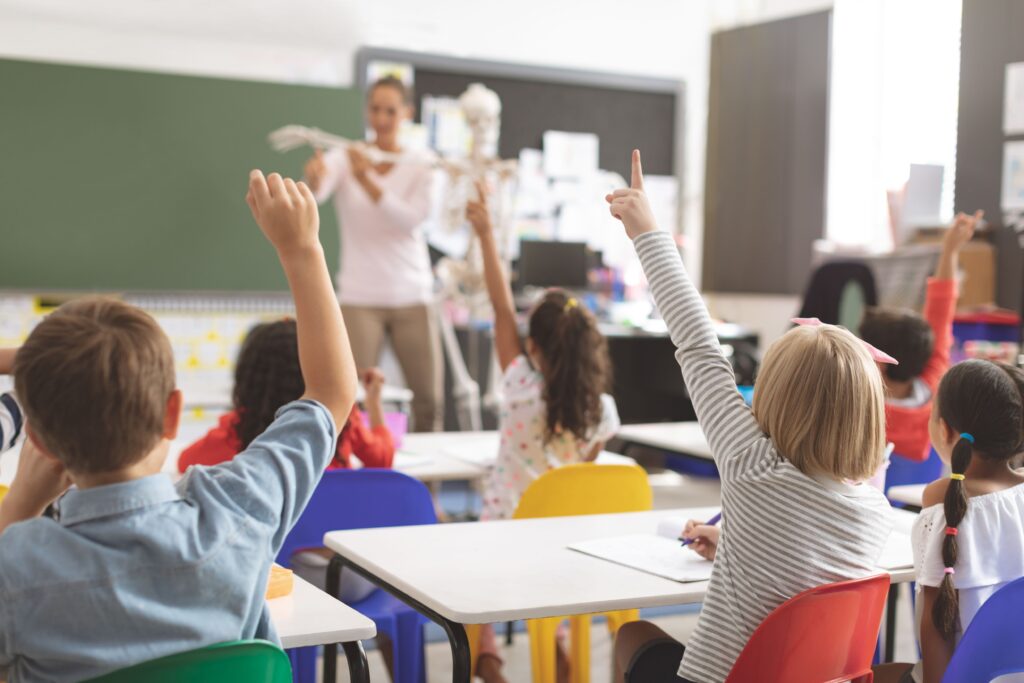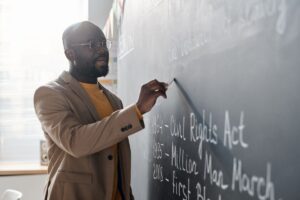What is Mainstreaming in Education?
Mainstreaming in education is integrating students with special needs into general education settings. This practice has special education students attending general education classes for specific academic subjects, such as science, and special area subjects such as physical education or art. Special education students join the general education class when the time is appropriate and fitting for their individual needs.
Inclusion is similar to but slightly different than mainstreaming. Inclusion was adopted when the No Child Left Behind Act (NCLB) was passed, and the goal was to place students in their Least Restrictive Environment (LRE) to learn. The LRE is the environment with the fewest number of restrictions that a student can find success in. Before NCLB, the academic progress of special education students was not tracked, but after it was put into place, the focus on all students and all academics changed. In an inclusive classroom, special education students are in the general education classroom for the entire school day.
The Rise of Inclusive Classrooms
Inclusive classrooms have become very common in the present day. Many districts currently use the In-Class Resource (ICR) model or are moving toward using that model. This is where the special education students are immersed in the general education classroom for the full day. A special education teacher is in the classroom the entire day and focuses on the special education students. This model has become popular as it most closely resembles the real world and helps to prepare students for different situations within the classroom walls as well as outside them.
The benefits of an inclusive classroom are varied. Students can develop stronger social skills. Special education students can learn how to socialize with a larger variety of peers in the general education setting. Students are also in a more rigorous academic environment with appropriate support being provided so they can meet success. Students develop a better understanding of community and feel they belong. Being a part of the larger group in the general education classroom can positively affect the self-esteem of special education students. Building confidence is integral to the success of special education students. Special education students are presented with different challenges in a general education setting where they learn more coping skills, form a wider range of friends, and push themselves further academically. Above all else, the inclusive classroom is a proponent of diversity.
There are some challenges in the inclusive classroom such as there are many times less support than is needed, limited experience with the general education teacher in dealing with special education students, and a lack of training for teachers to handle a classroom with a mix of regular and special education students. Oftentimes, especially after the Covid-19 Pandemic, substitute teachers have been lacking in school districts.
When there is a shortage of substitute teachers, teachers have to be pulled and spread out within the buildings to cover all of the classrooms. In my experience, the special education teacher in an ICR classroom is often pulled to cover other classes as there are two teachers in the classroom. In addition, if one of the two teachers in the ICR classroom is absent from school, the classroom often runs with one teacher. This makes it incredibly difficult to meet all the varied needs of the learners in the class. Though this is detrimental to the learning environment, administrators’ hands are often tied due to the lack of staff available.
It is no secret that there is a lack of training and effective professional development in many school districts. Teachers are placed in teaching situations that are foreign to them and that they have little to no experience with. As professionals, learning happens along the way, but it is a rocky path to get there. Not all general education teachers have experience with special education students, so there can be a lack of knowledge of how to modify assignments, create behavior plans, or follow Individualized Education Program (IEP) guidelines.
The Pros and Cons of Mainstreaming in Special Education
Mainstreaming can hold a great benefit to special education students. These students can join the general education classrooms at specific times that best fit their needs. In one of the schools I work in, the Multiple Disabilities Classroom, the students are in the general education rooms for Character Education each day. Students all join together for a morning meeting where different social-emotional topics are discussed.
In other classes, such as the Learning and Life Skills Development (LLD) class, those special education students are present in the Character Education, Special Areas (physical education/ music), lunch, and recess with the general education class. Each class is tiered in its level of support and the amount of time students are present within the general education setting. In this way, students are provided with their least restrictive learning environment.
Mainstreaming provides many of the same benefits as that of an inclusive classroom. As mentioned above, building confidence, better socialization, more challenging academics, and better feelings of belonging and community all happen within the mainstreaming of students. I have witnessed so many general education students take special education students under their wing and make them feel included. It is a great lesson for all students alike.
There are cons to mainstreaming as well. It can be distracting for general education students to have special education students in the classroom. There are times when behaviors happen that take away from the learning and organization of the classroom and many times slight behaviors must be ignored. Special education students can also feel overwhelmed in the general education setting or feel less confident in a larger group setting.
There is no perfect recipe for success regarding mainstreaming or inclusion, but the best we can do as educators is to keep evolving with it and do the best we can for our students. As Gandhi stated, “Our ability to reach unity in diversity will be the beauty and test of our civilization.” Within our schools, we strive to have unity daily in the diverse natures of our classrooms, students, and educators. It is a test each day that we sometimes pass and sometimes need to try again.
Educators never stop learning; check out our available graduate degree programs to hone your skills and promote lifelong learning and academic excellence.




